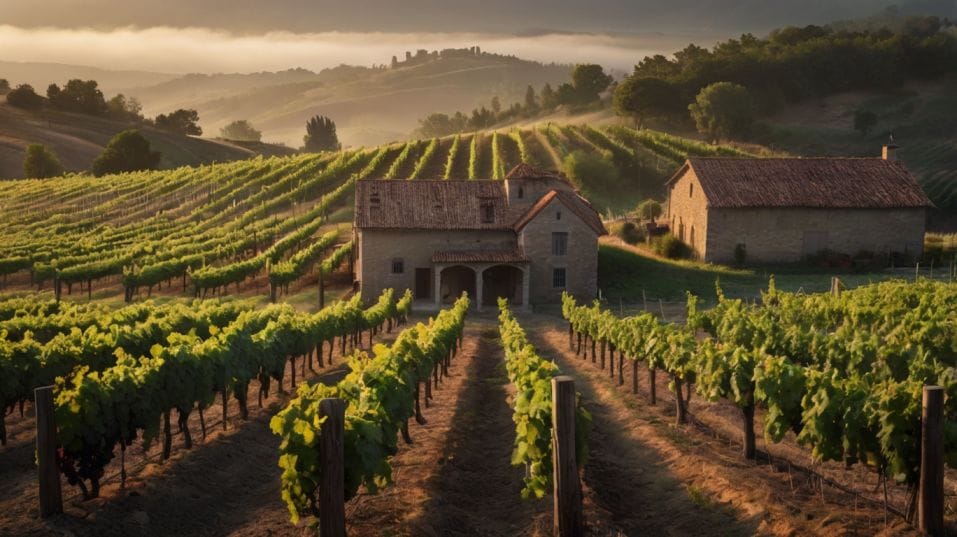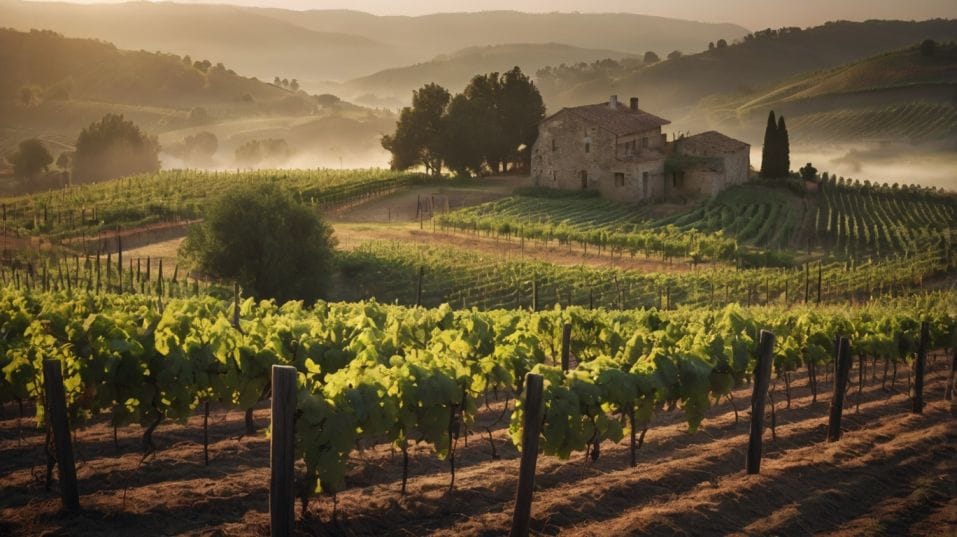What “Terroir” Really Means in Plain English
Curious about wine? Learn how terroir—wine’s sense of place—can help you taste smarter, buy better, and drink with deeper insight.

Ever wonder why the same grape can taste wildly different depending on the bottle? The answer is terroir. It’s not just wine speak—it’s the secret behind what makes a wine feel alive, layered, and unmistakably tied to place.
Whether you're just starting your wine journey or getting more curious by the sip, understanding terroir unlocks a whole new way to taste. Here's how it works—and why it matters more than you think.
What Terroir Actually Means
In French, terroir loosely translates to “of the earth.” But don’t mistake it for just soil. Terroir is the full environment where grapes grow—and the way that environment expresses itself in the wine you drink.
That includes:
- Soil: Clay, limestone, gravel, volcanic ash, sand—they all drain differently, retain heat differently, and affect the vine’s growth in subtle but powerful ways.
- Climate: Not just hot or cold, but rainfall patterns, humidity, wind exposure, and how much sun the vineyard gets throughout the growing season.
- Topography: Elevation, slope, and orientation to the sun impact ripening, drainage, and even how vines protect themselves from extreme weather.
- Natural Life: Microbes in the soil, nearby vegetation, wild yeasts, and biodiversity all contribute to the invisible fingerprint of a vineyard.
- Human Tradition: Farming practices, harvest decisions, fermentation style—what winemakers do with the land is part of terroir too.
In short, terroir is the total imprint of a place on a wine. It’s why the same grape can taste like two completely different wines depending on where it’s grown. Terroir is what gives wine its identity beyond the grape variety.

Why Terroir Helps You Taste Smarter
You don’t need to memorize vineyard maps to get value from terroir. Think of it as a tool—a filter that helps you make sense of what you’re tasting.
Let’s say you’re drinking two Syrahs. One’s plush, smoky, and ripe. The other’s leaner, peppery, and more savory. They’re both well-made, both from good producers. What explains the difference?
That contrast almost always comes down to terroir. The first might be from a warm valley with thick, loamy soil that pushes ripeness and richness.
The second might be from a wind-swept hillside with rocky soil that limits growth and preserves acidity.
When you learn to recognize those patterns—how site shapes style—you’re not just tasting more intelligently. You’re predicting what you’ll like before you open the bottle.
And when you find a wine that really resonates with you—fresh, stony, juicy, brooding—chances are, it’s not just the grape. It’s the place.
Terroir in Action: How It Shows Up in the Glass
You can’t always “taste” terroir directly—it’s not a flavor like cherry or toast—but it leaves clues. Once you know what to look for, it becomes a lens for tasting with more focus.
Cool vs. Warm Climates
- Cool climates (like northern France, parts of New Zealand, or higher-altitude regions in Chile or Argentina) tend to produce wines with higher acidity, lower alcohol, and more restrained fruit.
- Warm climates (like Napa, Barossa, or southern Italy) usually bring riper fruit, softer acidity, and fuller body.
What Soil Can Say
- Sandy soils often yield more fragrant, delicate wines.
- Clay tends to make wines deeper and rounder.
- Limestone is known for promoting freshness and lift.
- Volcanic soils? Think mineral tension and savory edges.
It’s not about memorizing these effects—it’s about learning how to connect your experience of the wine to what shaped it.
When a Sauvignon Blanc feels nervy and electric, that’s often terroir. When a Pinot Noir lingers with gentle earthiness and floral notes, that’s terroir too. Not in a mystical sense. Just real, natural influence—amplified by skilled winemaking.
Terroir vs. Technique: Why Both Matter
It’s easy to wonder: if winemakers control fermentation, aging, and blending, how much does place really matter?
The answer is: a lot—especially when the winemaker lets the vineyard speak. Great producers work with, not against, their site. They adapt their choices to highlight what the land offers, not cover it up.
That’s why two wines made from the same grape in the same year can taste wildly different if they come from different regions—or even different sides of the same hill.
Technique can refine or distort terroir, but it can’t create it. That’s why terroir-driven wines often feel more honest, more transparent, more alive. They aren’t chasing a flavor profile. They’re telling a story of where they came from.
How to Use Terroir to Drink Better
You don’t need to become a soil scientist to benefit from this. Start simple: pay attention to origin.
Not just country or grape, but specific regions, villages, or vineyard names. Over time, you’ll start seeing patterns—and noticing which ones align with your taste.
- Love mineral whites with zip and tension? Look to regions with limestone soils and cool climates—places like Chablis, Santorini, or northern Spain.
- Prefer full-bodied reds with structure and grip? Seek out hillside vineyards with plenty of sun and rocky soil—Barolo, Priorat, parts of the Rhône.
Vintage Variation Matters Too
Also, don’t overlook vintage. Terroir isn’t static. One rainy year can bring more freshness. A dry year might mean more concentration. That variation isn’t a flaw—it’s part of the charm.
Even better: when you revisit the same wine across multiple years, you start to build a memory for the place itself. That’s when terroir becomes more than a concept. It becomes personal.
Final Thoughts
Terroir is the key to tasting with depth and buying with purpose. It’s not about chasing labels or trends—it’s about understanding how nature and place shape wine in lasting, meaningful ways.
Start noticing where your favorite wines come from. Compare a grape across different regions. Revisit bottles from a place you loved.
And when something really clicks, dig deeper. What made that wine sing? Was it the soil? The altitude? The vintage?
The more you connect with terroir, the more confident—and curious—you’ll become. So tonight, try a wine from somewhere new.
Not for the novelty, but for the story. Because the better you understand place, the more every glass becomes a discovery worth savoring.




